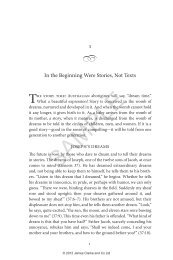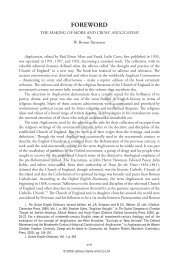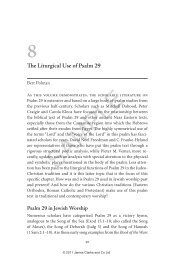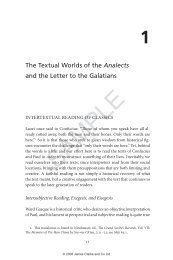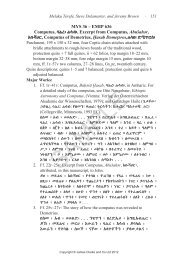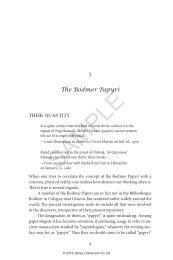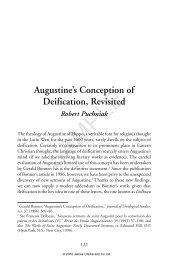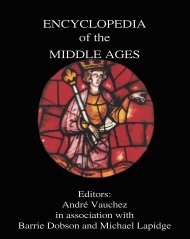Introduction by Kirk R. MacGregor - James Clarke and Co Ltd
Introduction by Kirk R. MacGregor - James Clarke and Co Ltd
Introduction by Kirk R. MacGregor - James Clarke and Co Ltd
Create successful ePaper yourself
Turn your PDF publications into a flip-book with our unique Google optimized e-Paper software.
<strong>Introduction</strong><br />
only makes sense within a soteriological context. When analyzing the relevant<br />
Pauline passages, Plasger discloses that, for believers, the Day of the<br />
Lord serves as the vehicle for deliverance from divine wrath <strong>and</strong> exp<strong>and</strong>s<br />
the reconciliation implemented through Jesus’ death <strong>and</strong> resurrection to<br />
the entire created order. Intriguingly, Plasger finds in Ephesians 5:6 <strong>and</strong><br />
<strong>Co</strong>lossians 3:6 an admonition against believers placing salvific confidence<br />
in their own act of belief rather than perceiving that belief is simply the<br />
means for appropriating salvation, a helpful corrective of new religious<br />
movements which teach people to “have faith in their faith.” According<br />
to Plasger, Paul views divine wrath as separation or alienation from God;<br />
however, God, in obedience to his covenant, takes such alienation upon<br />
himself in the person of Christ to forever set believing sinners free, a<br />
model best approximated <strong>by</strong> the thought of Barth.<br />
Chapter twelve bridges anthropology with philosophy of history, as<br />
<strong>James</strong> W. Bryant illuminates the uniqueness of the Hebraic view of human<br />
nature within the spectrum of ancient <strong>and</strong> modern views <strong>and</strong> then<br />
unfolds the significance of its time-space implementation. Unlike metaphysical<br />
dualisms between a good soul <strong>and</strong> evil body or vice versa, the<br />
Hebraic model was notable for its unitary quality, predicated upon the<br />
spiritual value of the material world. Since the Hebrews perceived God<br />
alone as infinite, humans were taken as finite <strong>and</strong> therefore mortal in <strong>and</strong><br />
of themselves; however, everlasting human life followed from the divine<br />
attributes of justice <strong>and</strong> relationality. Employing empirico-logical thought<br />
<strong>and</strong> intuition, the Hebrews surmised that justice dem<strong>and</strong>ed the ultimate<br />
vindication of righteousness <strong>and</strong> ultimate retribution against wickedness,<br />
which is typically not accomplished during the pre-mortem state.<br />
Moreover, they sensed the intrinsic constancy of relationship with God<br />
<strong>and</strong> its character as a link or channel supplying finite beings with the supernatural<br />
vitality that could permanently sustain them. Like Holmyard,<br />
Bryant finds anticipations of the general resurrection model of the afterlife<br />
sprinkled throughout the Hebrew Bible <strong>and</strong> not simply in later<br />
books such as Ezekiel <strong>and</strong> Daniel. Through his miracle-working ministry<br />
consummated at the resurrection, Jesus both validated the reality of, <strong>and</strong><br />
proved his control over, the general resurrection, marking a new center of<br />
history as the start of the transfigured creation to be continually renewed<br />
<strong>by</strong> a Spirit-empowered church until the Day of the Lord. Bryant delineates<br />
how the resurrection st<strong>and</strong>s as the pinnacle of a long line of disclosure<br />
situations, or historical revelations of God’s superintendence over history,<br />
SAMPLE<br />
xxx<br />
© 2011 <strong>James</strong> <strong>Clarke</strong> <strong>and</strong> <strong>Co</strong> <strong>Ltd</strong>





